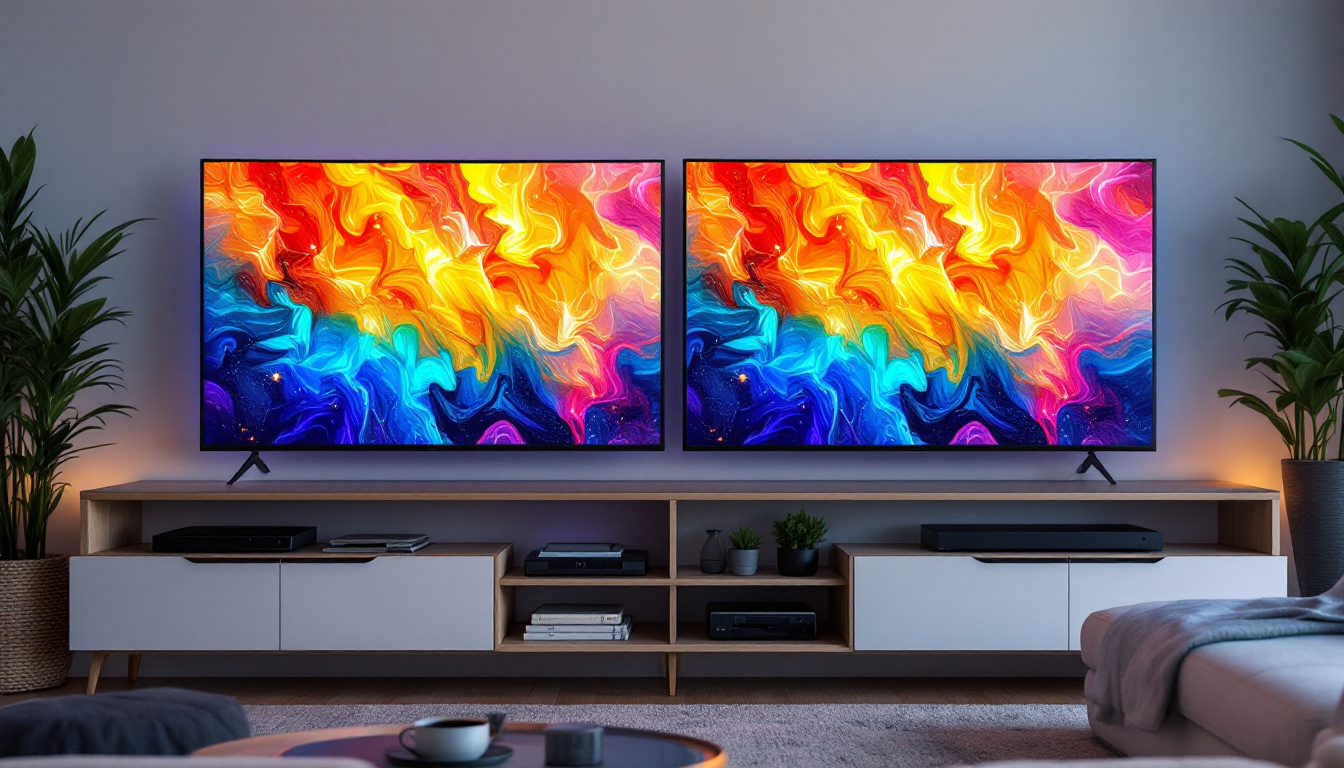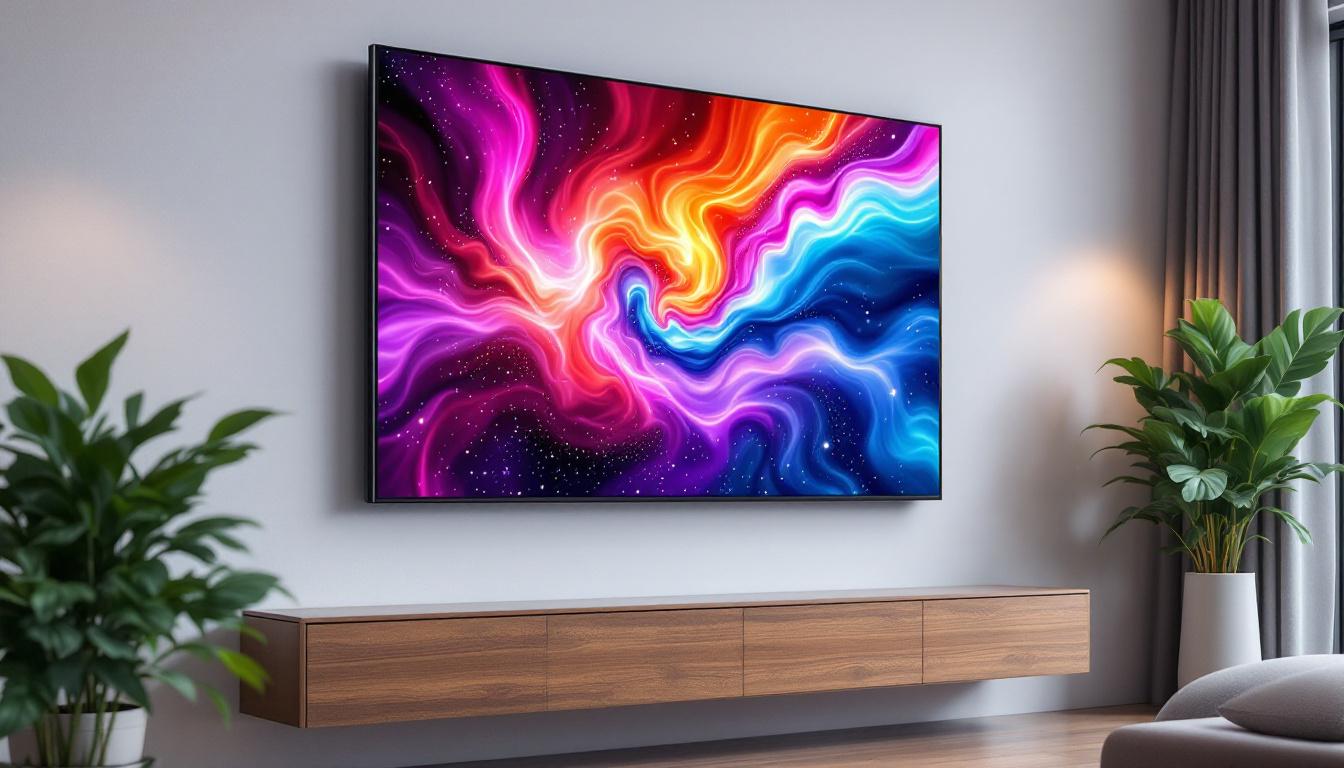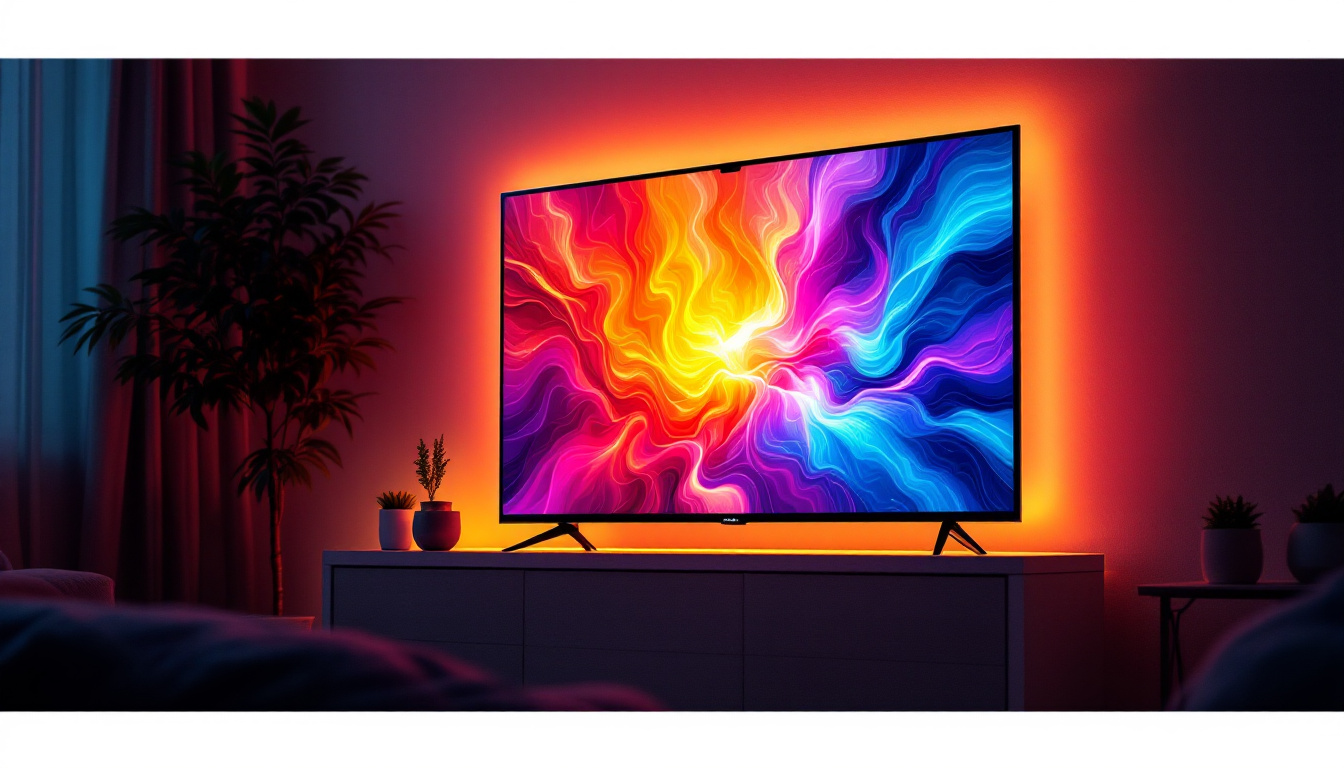In the world of television technology, the debate between LED and LCD TVs has been a long-standing one. As consumers seek the best viewing experience, understanding the differences and advantages of each technology becomes crucial. This article delves into the intricacies of LED and LCD displays, helping readers make informed decisions when purchasing their next television.
Understanding LCD Technology
LCD, or Liquid Crystal Display, has been a staple in the television market for many years. This technology utilizes liquid crystals sandwiched between two layers of glass or plastic. When an electric current passes through the crystals, they align to allow varying amounts of light to pass through, creating images on the screen.
How LCD Works
The fundamental operation of an LCD screen involves backlighting, typically provided by fluorescent lamps or LEDs. The liquid crystals themselves do not emit light; instead, they manipulate the light that comes from the backlight. This design allows for thinner screens and a more lightweight structure compared to older technologies like CRT (Cathode Ray Tube).
LCD technology has evolved significantly, with advancements leading to improved color accuracy and better contrast ratios. However, traditional LCDs can struggle with deep blacks and vibrant colors, particularly in darker scenes, due to the nature of their backlighting. To address these limitations, manufacturers have developed various enhancements, such as local dimming and quantum dot technology, which help to improve the overall picture quality and color reproduction, making modern LCDs more competitive with OLED displays.
Advantages of LCD TVs
One of the primary advantages of LCD TVs is their affordability. They are generally less expensive than their LED counterparts, making them an attractive option for budget-conscious consumers. Additionally, LCD TVs tend to have a longer lifespan compared to older technologies, providing a reliable viewing experience over time.
Another benefit of LCD technology is its ability to produce sharp images. With high pixel density, LCD TVs can deliver clear and detailed visuals, making them suitable for a variety of content, from sports to movies. Furthermore, LCD TVs are less prone to burn-in issues, a problem that can affect OLED displays when static images remain on the screen for extended periods. This characteristic makes LCDs particularly appealing for users who enjoy gaming or frequently watch channels with static logos, as it ensures that their screens remain in pristine condition without the risk of permanent image retention.
Moreover, LCD TVs are often equipped with a variety of connectivity options, including HDMI, USB, and even wireless capabilities, allowing users to easily connect their devices for streaming or gaming. This versatility enhances the overall user experience, as it caters to the modern viewer’s need for seamless integration with multiple sources of entertainment. Additionally, many LCD models now come with smart technology, enabling access to popular streaming services and apps directly from the TV, further solidifying their place in contemporary households.
Exploring LED Technology
LED, or Light Emitting Diode, technology is often considered an evolution of LCD. While LED TVs still utilize liquid crystal displays, they differ primarily in their backlighting method. Instead of using traditional fluorescent lights, LED TVs use an array of tiny diodes to illuminate the screen.
Types of LED Backlighting
There are two main types of LED backlighting: edge-lit and full-array. Edge-lit LED TVs have LEDs positioned along the edges of the screen, allowing for a thinner profile. This design can lead to uneven lighting and less impressive contrast in some cases.
On the other hand, full-array LED TVs feature a grid of LEDs behind the entire screen. This setup allows for more precise control over local dimming, resulting in deeper blacks and brighter whites. Full-array backlighting generally provides a superior picture quality, making it a preferred choice for serious home theater enthusiasts.
Benefits of LED TVs
One of the most significant advantages of LED TVs is their superior energy efficiency. LED technology consumes less power compared to traditional LCDs, which can lead to lower electricity bills over time. Additionally, LED TVs often offer better brightness levels, making them ideal for viewing in well-lit rooms.
Moreover, LED TVs typically provide enhanced color accuracy and contrast ratios. With local dimming capabilities, these televisions can deliver stunning visuals, particularly in high-definition content. The ability to produce deeper blacks and more vibrant colors contributes to a more immersive viewing experience.
In addition to their visual prowess, LED TVs are often equipped with advanced smart technology features. Many models come with built-in streaming services, allowing users to access a wide range of content without needing additional devices. This integration of technology not only simplifies the viewing experience but also enhances it, as users can easily switch between live television, streaming platforms, and even gaming consoles with just a few clicks.
Furthermore, the longevity of LED technology is another compelling reason for its popularity. LED lights have an impressive lifespan, often lasting up to 25,000 hours or more. This durability means that consumers can enjoy their investment for years without the need for frequent replacements or repairs. As a result, LED TVs represent not just a technological advancement but also a practical choice for those looking to upgrade their home entertainment systems.
Comparing Picture Quality
When it comes to picture quality, both LED and LCD technologies have their strengths and weaknesses. While traditional LCDs may struggle with contrast and color vibrancy, LED TVs generally excel in these areas due to their advanced backlighting techniques.
Contrast and Color Accuracy
LED TVs, especially those with full-array backlighting, tend to outperform traditional LCDs in terms of contrast. The ability to dim specific areas of the screen allows for a more dynamic range of brightness, leading to richer colors and deeper blacks. This feature is particularly noticeable in scenes with high contrast, such as dark movies or action-packed sequences.
Color accuracy is another area where LED TVs shine. With the ability to produce a wider color gamut, these televisions can display more vibrant and lifelike images. This advantage is especially important for viewers who prioritize visual fidelity and seek a more cinematic experience.
Viewing Angles
One of the drawbacks of traditional LCD technology is its limited viewing angles. When viewed from the side, colors can appear washed out, and contrast can diminish significantly. LED TVs, particularly those with IPS (In-Plane Switching) technology, offer improved viewing angles, allowing for consistent picture quality even from off-angles.
However, it is worth noting that some LED TVs, especially those with VA (Vertical Alignment) panels, may still exhibit color shifts when viewed from extreme angles. Therefore, it is essential for consumers to consider their viewing environment when selecting a television.
Energy Efficiency and Environmental Impact
As awareness of environmental issues continues to grow, energy efficiency has become a crucial factor in the decision-making process for consumers. Both LED and LCD technologies have made strides in reducing energy consumption, but there are notable differences.
Energy Consumption
LED TVs are generally more energy-efficient than traditional LCDs. The use of LEDs as a backlight requires less power, which can lead to significant savings over time. This efficiency is particularly beneficial for households that watch television frequently, as lower energy consumption translates to reduced electricity bills.
Additionally, many LED TVs come with energy-saving features, such as automatic brightness adjustment and power-saving modes. These features not only contribute to lower energy usage but also extend the lifespan of the television.
Environmental Considerations
When considering the environmental impact of television technology, it is essential to look at the materials used in production and the disposal process. LED TVs typically have a longer lifespan than traditional LCDs, which reduces electronic waste over time. Furthermore, many manufacturers are increasingly adopting eco-friendly practices in their production processes, using recyclable materials and minimizing harmful substances.
Consumers can also contribute to sustainability by choosing energy-efficient models that meet ENERGY STAR certification standards. These models are designed to consume less energy without compromising performance, making them a responsible choice for environmentally-conscious buyers.
Price and Value
Price is often a determining factor when purchasing a new television. While both LED and LCD TVs are available at various price points, there are some general trends to consider.
Cost of LED vs. LCD TVs
In general, LED TVs tend to be more expensive than traditional LCDs. The advanced technology and superior picture quality often justify the higher price tag for many consumers. However, the price difference can vary significantly depending on the brand, size, and features of the television.
For budget-conscious buyers, traditional LCDs may still offer a good value, particularly for those who do not require the highest picture quality or advanced features. However, as technology continues to evolve, the gap between the prices of LED and LCD TVs is gradually narrowing.
Long-Term Investment
When evaluating the value of a television, it is essential to consider the long-term investment. While LED TVs may have a higher upfront cost, their energy efficiency, superior picture quality, and longer lifespan can make them a more cost-effective choice over time. Consumers should weigh the initial investment against the potential savings and benefits of owning a high-quality LED television.
Conclusion: Making the Right Choice
Ultimately, the choice between LED and LCD TVs depends on individual preferences and viewing habits. For those seeking superior picture quality, energy efficiency, and advanced features, LED technology is often the better option. However, traditional LCDs can still provide a reliable and cost-effective solution for viewers who prioritize affordability.
When making a decision, it is essential to consider factors such as viewing environment, budget, and desired features. By understanding the differences between LED and LCD technologies, consumers can make informed choices that enhance their viewing experience and meet their specific needs.
As technology continues to evolve, it is likely that new innovations will further blur the lines between these two display types. Staying informed about the latest advancements will empower consumers to choose the best television for their homes, ensuring a satisfying and enjoyable viewing experience for years to come.
Discover the Future of Visual Experience with LumenMatrix
As you consider upgrading your home entertainment system, take the leap into unparalleled visual excellence with LumenMatrix. Our commitment to innovation in LED display technology ensures that you get the most vibrant colors, deepest blacks, and an energy-efficient solution that aligns with your desire for superior picture quality. Explore our wide range of LED display solutions, including Indoor and Outdoor LED Wall Displays, Vehicle LED Displays, and more, each designed to transform your viewing experience. Check out LumenMatrix LED Display Solutions today and see how we can help you share your message with impact and clarity.































